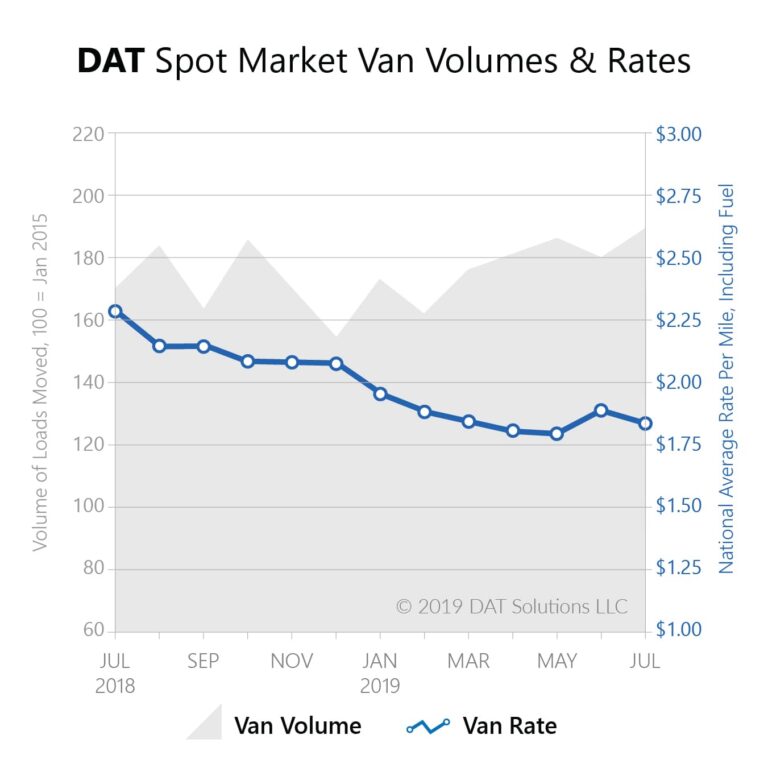PORTLAND, Ore. — Shipments of dry van freight, the most common type of truckload shipment, rose 6.8 percent in July compared to June, according to the DAT Truckload Volume Index, which reflects the change in the actual number of spot market loads moved each month.
The national average van rate declined from June to July, however, a seasonal trend, said Peggy Dorf, Market Analyst with DAT Solutions, which operates the largest electronic marketplace for spot truckload freight.
“July often marks the beginning of a downward turn for truckload rates,” Dorf explained. “That has less to do with volume than the fact that, after the close of Q2 and the end of the Fourth of July holiday, shippers feel less urgency to get deliveries made by a specific date.”
While those trends may have been predictable, the announcement of new tariffs on Chinese imports beginning Sept. 1 could disrupt typical late-summer freight patterns.
“There was an uptick in activity at the end of July, and that could carry over into August,” said Dorf. “Shippers may rush to move imports ahead of the new tariffs, which could disrupt what would normally be the summer doldrums for pricing.”
The national average van rate in July was $1.84 per mile, which includes fuel surcharges. While that was a 5-cent decline from the June average, it was otherwise the highest monthly average for vans since March. Year over year, the national average rate was 43 cents lower than the historic highs set in July 2018, even though volume this July was up 13 percent compared to last year.
Harsh weather curtailed and/or delayed many produce harvests this year. That disrupted refrigerated (“reefer”) shipments, but improved yields out of California contributed to an 8.7 percent increase in reefer volume from June to July. Reefer rates averaged $2.19 per mile nationally, a 6-cent drop from June but otherwise the highest monthly average since February. The July 2019 average was down 41 cents from July 2018, even though volume increased 12 percent compared to last year.
Flatbed volume also rose in July, up 6.6 percent month over month, although the national average flatbed rate fell to $2.27 per mile, 3 cents below the June rate and 50 cents below the sky-high average of July 2018. Compared to last year, flatbed volume was up 18 percent.
“Truckload pricing followed normal seasonal patterns in July, despite uncertainty in some segments of the economy,” said Dorf. “Moving forward, the new tariffs are a wild card, on top of the potential risks to supply chain operations during hurricane season.”
The Trucker News Staff produces engaging content for not only TheTrucker.com, but also The Trucker Newspaper, which has been serving the trucking industry for more than 30 years. With a focus on drivers, the Trucker News Staff aims to provide relevant, objective content pertaining to the trucking segment of the transportation industry. The Trucker News Staff is based in Little Rock, Arkansas.















